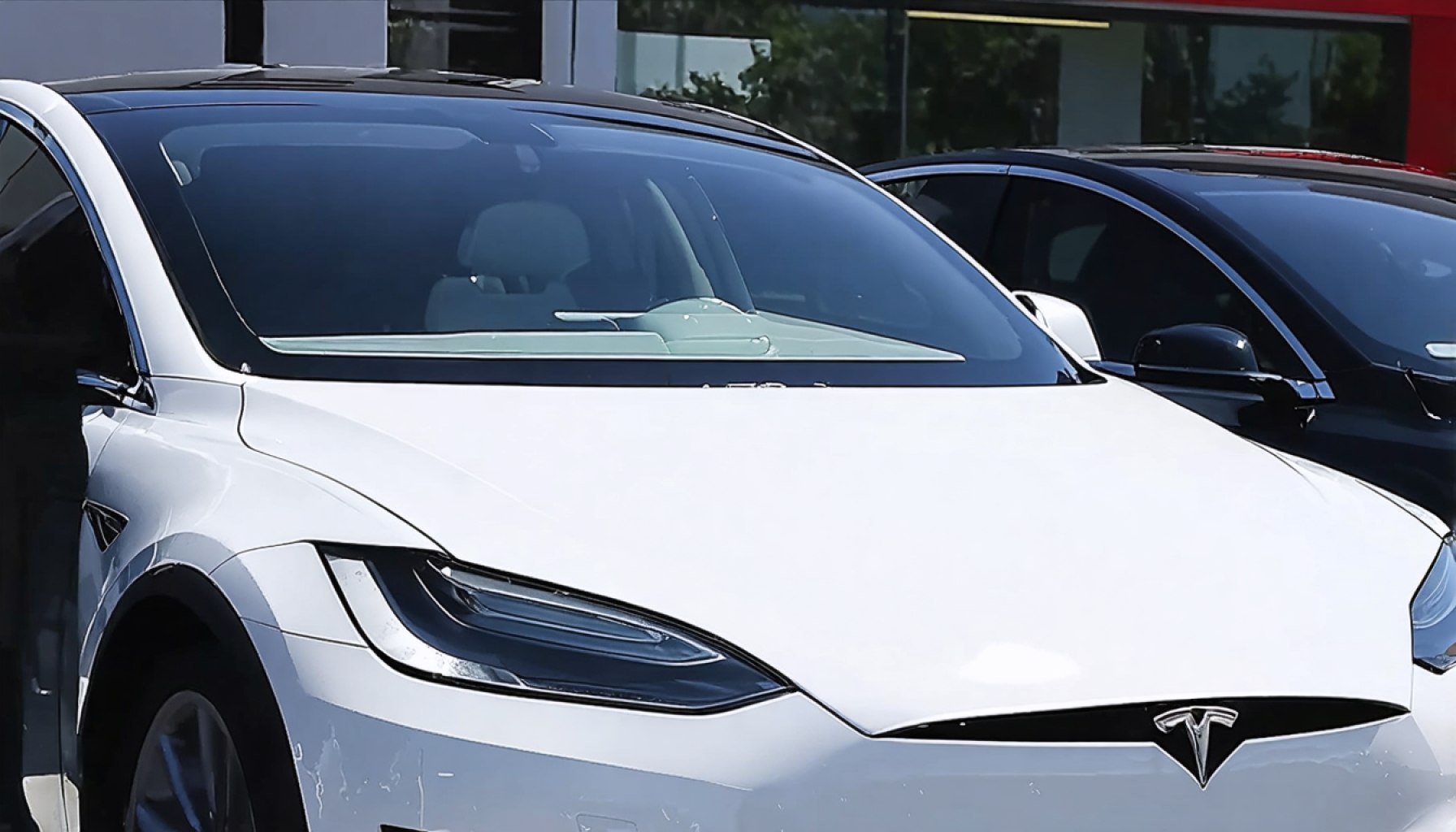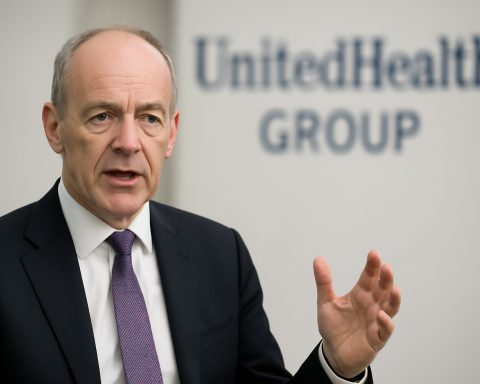- Tesla’s stock has sharply declined, dropping over 10% in one day and 50% since December, hitting its lowest point due to various pressures.
- UBS downgraded Tesla’s price target from $259 to $225, highlighting reduced demand and forecasting fewer deliveries.
- China’s significant decrease in Tesla shipments—down nearly 49% year-over-year—adds to the downturn, exacerbated by geopolitical and economic tensions.
- Optimistic analysts like Wedbush’s Dan Ives maintain high price targets, viewing Tesla’s challenges as temporary in the broader context of its growth potential.
- Tesla’s future trajectory beyond automobiles, including AI and robotics, is underscored by analysts as a pivotal growth area.
- Elon Musk’s political involvements complicate Tesla’s public image, influencing investor sentiment and market dynamics.
- As Tesla approaches its Q1 earnings report, it remains a battleground for bullish and bearish views, offering potential opportunities for investors.
Challenging winds sweep through the financial landscape as Tesla’s stock nosedives, shedding over 10% in a day. The ubiquitous electric vehicle giant stands at a precipice, witnessing its shares tumble by 50% since their December zenith of $479. This sharp descent marks the lowest point since November’s political maelstrom initiated its influence on the stock market. But what’s driving this downward spiral for Elon Musk’s brainchild?
A shadow materials in the form of a bearish report from UBS, which trimmed its price target to $225 from $259, urging caution among investors. UBS spotlights a dip in demand, forecasting 367,000 deliveries for Q1 — a notable decline from the initially anticipated 437,000. It’s a significant cut that depicts a 26% quarter-on-quarter drop, signaling a deceleration in Tesla’s otherwise meteoric growth trajectory. UBS leveraged their in-depth lab data, stressing low delivery times for Tesla’s Model 3 and Model Y as a harbinger of tepid demand across key markets.
On another front, Tesla’s foothold in China wavers, with February shipments plummeting nearly 49% year-over-year, reaching a nadir not seen in three years. The reverberations of such an international downturn have caught the eyes of market watchers, as geopolitical tensions and economic factors weave into a challenging narrative for Tesla.
Despite these numbers, optimism breathes in other corners of Wall Street. Influential voices like Wedbush’s Dan Ives mount a spirited defense, perceiving this slump as a mere “gut check” amidst Tesla’s broader saga. Ives holds firm to his confidence in Tesla’s disruptive potential, sticking to his bold $550 price target. Meanwhile, Morgan Stanley’s Adam Jonas eyes the company’s evolution beyond cars, postulating a future woven with artificial intelligence and robotics, placing a long-term price target of $430.
Stepping beyond vehicles, Elon Musk’s adventures in the political theatre complicate the scene further. His proximity to former President Trump’s administration has stirred public sentiment, as illustrated by polling numbers reflecting unease with Musk’s political entanglements.
As the calendar edges towards Tesla’s Q1 earnings reveal on April 22, unwavering bulls juxtapose with cautious bears, painting a complex portrait of a company in transition. This volatile period could serve as an enticing prospect for the audacious, offering investors an “attractive entry point” at the dawn of Tesla’s next chapter. Here lies the crux: in navigating market ebbs and political currents, Tesla fêtes resilience and innovation, challenging investors to discern the profound from the ephemeral.
Tesla’s Tumultuous Ride: Can Innovation Outpace Market Challenges?
Understanding Tesla’s Recent Stock Decline
Tesla’s stock market troubles have become a focal point in recent financial news, with the company’s shares experiencing a significant drop. This decline is driven by a variety of factors, including a bearish report from UBS, challenges in the Chinese market, and the company’s intricate political entanglements. Let’s delve deeper into these issues and explore what they mean for investors and the industry at large.
The UBS Report and Its Implications
The UBS report slashing Tesla’s price target from $259 to $225 raises concerns about demand and delivery forecasts. UBS’s analysis suggests a notable decline in Tesla’s Q1 deliveries, predicting only 367,000 units compared to an expected 437,000. This projected 26% quarter-on-quarter drop signals a deceleration of growth, which could potentially impact Tesla’s market position and future revenues.
How to Interpret Financial Forecasts:
– Understand the basis of the forecasts: Look into the data sources and metrics used to make these predictions.
– Compare with historical trends: Analyze past performance to identify if the forecast aligns with historical data.
– Consider broader economic factors: Look at how macroeconomic conditions may influence these forecasts.
Challenges in the Chinese Market
China, one of Tesla’s key markets, has shown a 49% year-over-year decline in shipments for February, marking a significant setback for the company. This underscores the influence of geopolitical tensions and economic instability on Tesla’s international performance.
Real-World Use Cases:
– Adapt strategies to mitigate risks associated with geopolitical tensions in China.
– Diversify market presence to reduce reliance on any single geographical region.
Political Intricacies and Public Perception
Elon Musk’s political engagements and proximity to certain U.S. political figures have affected public sentiment and investor confidence. As public perception can significantly influence stock performance, it’s crucial for Tesla to manage these aspects carefully.
Controversies and Limitations:
– Political affiliations can cloud business decisions, and it’s important for companies to maintain an apolitical stance to avoid fracturing their customer base.
– Public perception can sway market trends, highlighting the need for effective public relations strategies.
Optimism Amidst Turbulence
Not all voices share the pessimism surrounding Tesla’s recent challenges. Analysts like Dan Ives from Wedbush and Adam Jonas from Morgan Stanley remain optimistic about Tesla’s long-term potential, highlighting its diversification into AI and robotics as well as its innovative capabilities.
Insights & Predictions:
– Tesla’s ventures into AI and robotics could position it as a leader in these fields, transforming it from a car manufacturer to a tech conglomerate.
– The company is likely to continue pushing for innovation, which could lead to new revenue streams beyond automotive sales.
Actionable Recommendations for Tesla Investors
– Stay Informed: Keep up with both Tesla’s quarterly earnings and broader market conditions to make informed investment decisions.
– Diversify Portfolio: Consider balancing Tesla shares with other promising stocks to mitigate individual company risk.
– Evaluate Long-term Potential: Focus on Tesla’s strategic initiatives and innovative ventures for evaluating long-term growth potential.
For more insights on electric vehicles and market trends, visit the Tesla and Wall Street Journal websites.
Final Thoughts
As Tesla navigates this turbulent period, the key for investors is to distinguish between short-term fluctuations and the company’s long-term potential. By considering a wide array of factors—ranging from market trends and political landscapes to technological advancements—investors can harness opportunities and make strategic decisions amidst uncertainty.












